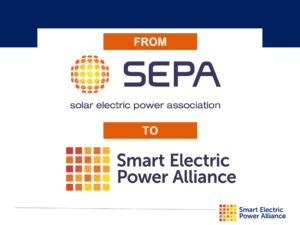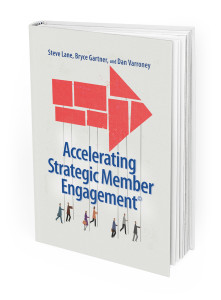In an evolving and complex world, is it possible for associations to become vital to the industries they serve? Today’s norm means slow or uncertain market growth, member expectations of direct return on engagement, and an emerging view that an association either drive or facilitate market disruption. As organizations consider these factors, is becoming a vital association too tall an order to fill?
What Is a Vital Association?
A vital Association creates unparalleled and sustainable value by bringing people together in ways that they find meaningful and practical, because they perceive an ability to impact something they desire, individually and collectively. In other words, it’s all about Strategic Member Engagement.
The vital association has 6 key characteristics:
- Unites all segments of an industry to envision a new and different future
- An idea incubator where opportunities for all stakeholders to build and design solutions together
- Evolves as an industry evolves and helps pave the way for the next disruption
- Aligns its resources in order to pro-actively address sudden changes in member “up-at-night” issues
- Through its outward focus and industry support, the association is relevant and it positions itself as a key partner to the industry it serves
- Strategically focused Board meetings are industry focused, where executives share knowledge, address industry challenges, and devise solutions
A Vital Association Can Move an Industry Forward Together
Consumers have and will have even greater opportunities to select the type of energy they choose. Starting in 1977, some 17 states changed regulations to allow both natural gas and electricity. Fast forward to present day where Solar Power is gaining market traction with international and domestic consumers. With Consumer Choice and competing providers in one market place, one organization is bringing all of the industries’ stakeholders together to envision a new and different future.
The Smart Electric Power Alliance

Established in 1992 as the Utility Photovoltaic Group, the organization is a 501 C3, educational non-profit that provides education, research and collaboration to help utilities deploy and integrate solar, storage, demand response, and other distributed energy resources. In 2000, the organization changed its name to the Solar Electric Power Association. As a result of a fifteen-month strategic exercise with its board of directors, the organization re branded itself in 2015 and is now known as the Smart Electric Power Alliance.
 The Washington, DC based organization is led by Julia Hamm, President and CEO, who emphasizes that a key element of the association’s value proposition is the organization’s neutrality. It does not advocate or take positions on issues, drive trends, or pick favorites. Its key focus to bring all stakeholders to the conversation in order to develop, share, and build practical solutions for the entire industry. The membership comprises utilities, large energy users, as well as corporate and non-profit corporations.
The Washington, DC based organization is led by Julia Hamm, President and CEO, who emphasizes that a key element of the association’s value proposition is the organization’s neutrality. It does not advocate or take positions on issues, drive trends, or pick favorites. Its key focus to bring all stakeholders to the conversation in order to develop, share, and build practical solutions for the entire industry. The membership comprises utilities, large energy users, as well as corporate and non-profit corporations.
SEPA Facilitates Industry Disruption
Julia Hamm and her team launched the 51st State Initiative in order to bring all of the industry’s stakeholders together. Developed as a “safe space” for the industry to meet and avoid difficult discussions related to market and rate reform occurring in many jurisdictions, the initiative creates an ongoing opportunity for experts and industry leaders to share,  test, and provide feedback on direction and innovation to support an evolving utility sector.
test, and provide feedback on direction and innovation to support an evolving utility sector.
Essentially through the 51st State initiative, all stakeholders are being provided the opportunity “to create ideal, sustainable market structures from the ground-up, rather than attempting to make wholesale or partial changes to something that has been in place for decades.”
Vital Association Remains a Relevant Strategic Partner to The Industry
In today’s new norm, executives have more choices including: for profit firms, self-forming interest groups, emerging industry coalitions, and emerging new associations. For associations to thrive it’s essential to remain relevant and be perceived as a strategic partner to the industry. The Smart Electric Power Alliance through its 51st State initiative and other solutions based programs positions itself at the apex of where the industry is heading.
For Julia Hamm and the Smart Electric Power Alliance, it’s about leading their industry to a more compelling future through their board and their membership.
The Vital Association
In a time of uncertainty, innovation, and disruption, the role of Associations is evolving well past traditional boundaries. The vital association definition sets a high bar indeed. If associations clear that bar, the industries served by these organizations will recognize the role that their key partner played in supporting their success. For example, the Smart Electric Power Alliance has seen annual revenues grow 23% (2015 to 2016) and also in 2016 experienced a 62% increase in total staff (to 35 employees from 22).
Free eBook “Accelerating Strategic Member Engagement” is available upon request for all Association Executives at www.potomaccore.com






